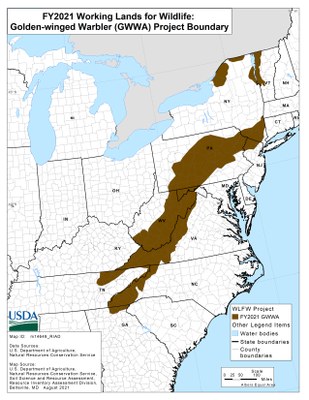Golden-Winged Warbler Website
The Golden-Winged Warbler Partner website was funded for NRCS and its partners to collaborate in support of private landowners to implement Working Lands for Wildlife partnership
On the breeding grounds, this species requires expansively forested landscapes comprised of young forests and shrubland patches used for nesting that are interspersed among a diversity of other forest age-classes that are used to raise fledglings.
Early successional habitat in the bird’s breeding range, the Upper Midwest and Appalachian Mountains, has declined over the past 50 years as aging forests have come to dominate huge expanses. Both game and non-game species that rely on younger forests are in decline, including the golden-winged warbler, which has suffered a 66 percent population decline since the 1960s. This major shift in the age classes of forests is the result of a lack of fires that occurred historically and unsustainable forestry practices that do not result in healthy, structurally diverse forests.
Most of the golden-winged warbler’s nesting habitat falls on private lands, including Appalachia where 80 percent of forestland is privately owned. Landowners are helping the at-risk bird and many associated wildlife species by voluntarily improving the health and diversity of their forests.
Content Link: NRCS Golder Warbler Website






















